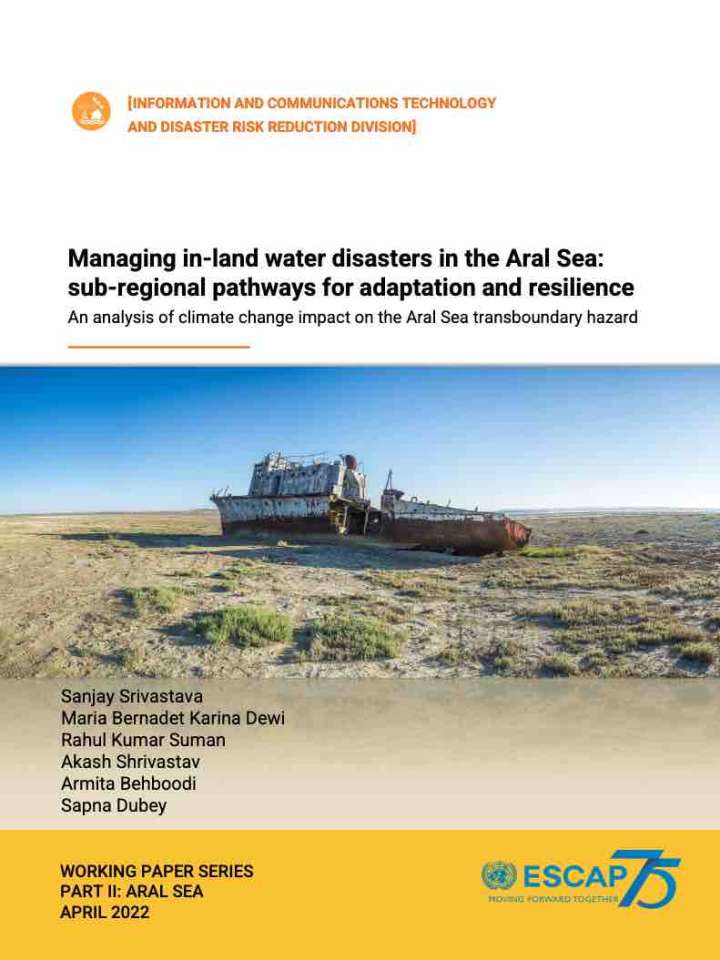Managing in-land water disasters in the Aral Sea: Building a sub-regional co-operation mechanism for adaptation and resilience
Recognizing the context of the UN Special Programme for the Aral Sea basin, ESCAP’s study using a multi-sectoral and multi-disciplinary disaster risk reduction approach aims to devise a regional mechanism involving all concerned countries of the Aral Sea.
ESCAP’s analytical work on managing in-land water disasters in the Aral Sea is organized in two parts. While Part I titled ‘Aral Sea, Central Asian Countries and Climate Change in the 21st Century’ deals with water management perspectives, it unfolds the processes that led to complete depletion of water resources, i.e. water use exceeding available resources. It also highlights that by 2030-2050, the countries of the region will also reach the limits of irrigated land expansion because of its limited availability.
Part II of the analytical work - ‘managing in-land water disasters in the Aral Sea: sub-regional pathways for adaptation and resilience’ capitalizes on state-of-the-art climate modelling, data science, geo-spatial tools, digital elevation models and analytics to present the risk in the region. Considering a transboundary hazard – the Aral Sea represents shared vulnerabilities and risks. It’s crucial for the adaptation and resilience priorities of transboundary Aral Sea hazard to be risk informed, especially on the sub-regional specificities.
Explore further
